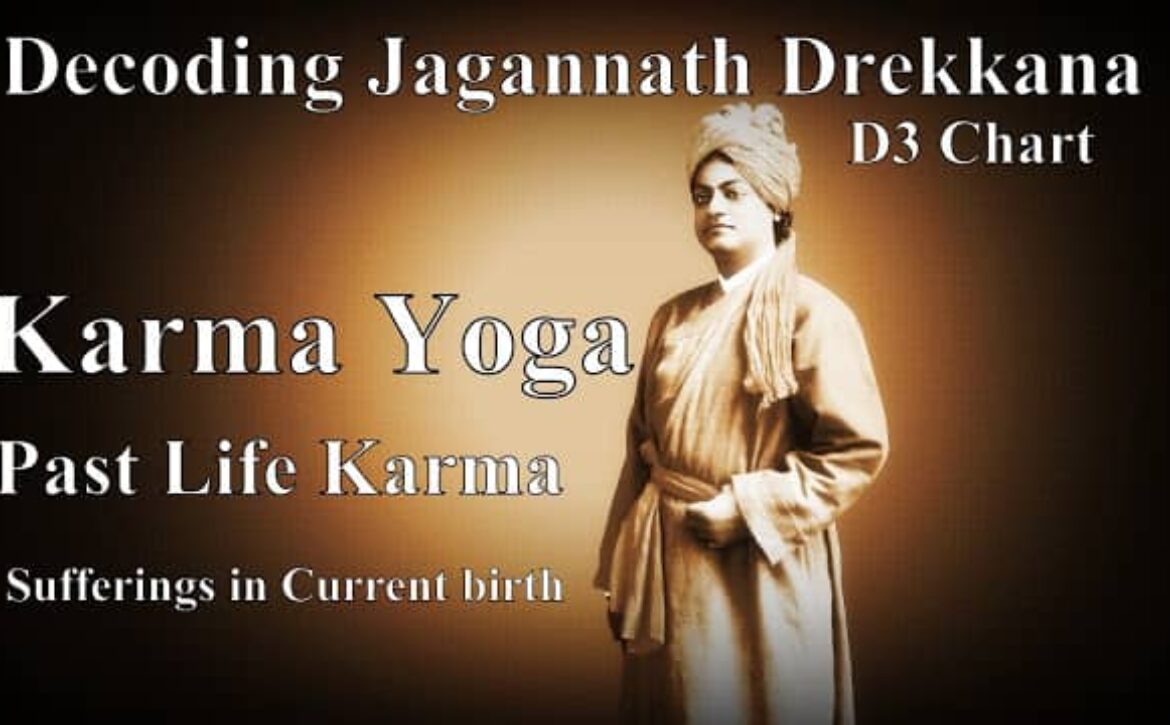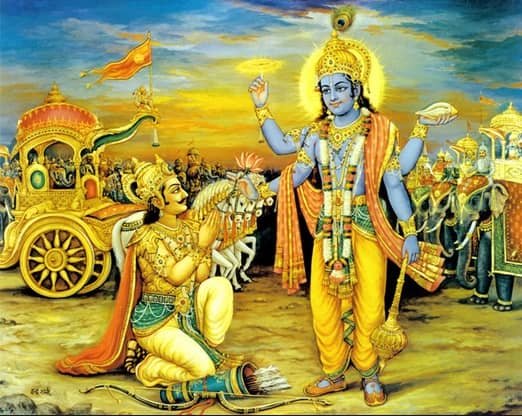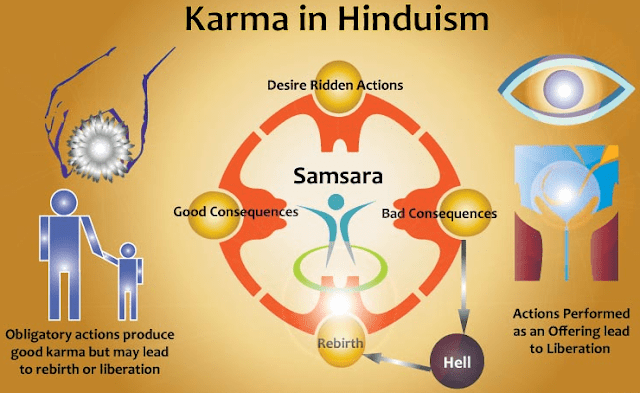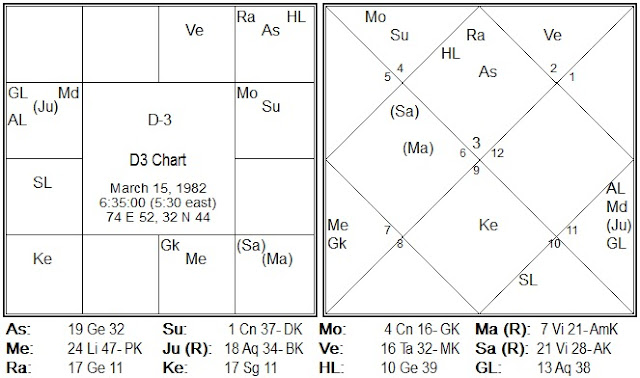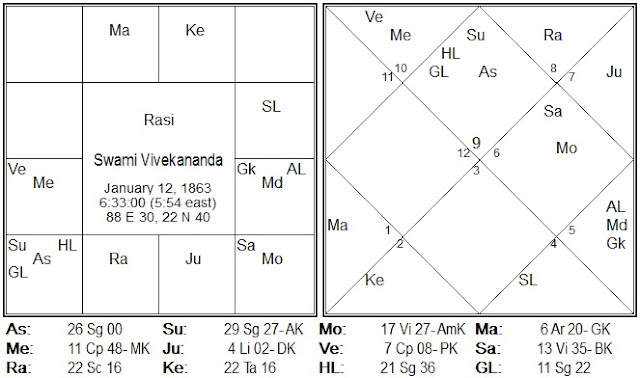Past life Astrology and Karma Theory : How to analyse Past life Karma, life purpose and destiny
Subject Analysis: Past life Astrology: Decoding Jagannath drekkana (D3), Destiny, Karma, Past birth karma, Karma Phala, and Karma Yoga of current birth.
Re-Edited, Compiled, and Analysed on 20th Jan 2018
Introduction
Understanding Past life astrology, Karma Phala, and Karma Yoga astrologically
Astrology says,
“Avashyam anubhoktavyam kruta karma shubhashubham”
which means, one has to experience the effects of karma in any case whether it is part of good or bad actions. Karma Phalas act like Newton’s third law of motion which clearly says that,
“To every Action, there is an equal and opposite reaction”.
Karmaphala or the result of our actions equally works like newton’s third law of motion and the same are equally powerful, whether we do good or bad karma in any birth or life. All our actions and work in society act like an arrow shot. Once it is shot from the bow, there is no chance to recall it in any case. Karma Phala or cause or effects work in the same way, so everyone has to be very cautious and one should always think before any action.
Karmas are majorly classified into three major categories. Dridha, Adridha & Dridh-Adridha karmas or Uddishya, Anuddhishya & Uddishyanuddhishya karmas.
According to our Hindu philosophy, it is based on the Karma & reincarnation theory. Without understanding the twin theory of Karma and Reincarnation no one can able to follow or decode divisional charts.
What is the Natal Chart all about?
Natal Chart is all about the Prarabdha Karmas that we had performed in any many of the birth and that we have to face in this birth, where Planetary placements of Retrograde planets, Malefic in trik Bhavas, and affliction to the Karka planets via nodes shows what our major Prarabdha that we have to experience without getting any redemption from it, whereas Fixed signs are more rigid in nature as there is no pran Vayu in fixed signs, where Dual signs are totally blessings of Vishnu and Chara rashis shows the Blessings of creation or Brahma. If we look deeply, Dharma Trikonas in the D1 chart show what are our Total sanchit karmas of the past which have a good karmic part bag in it from the total portion of the karma, and that can come at any moment of life in Dashas, Antar Dasha and in transits.
All the Divisional chart shows the Root cause of the Past Karma and shows subtle reasoning behind any karma that what we had performed in past and also shows what we have to do in near future, whereas D9, D3, D10, and D60 are the root houses that exactly speaks about the Karma and portion of its phala from the past life.
Whereas, Drekkana (D3) and Navamsa (D9) are the, most important Divisional charts after Shashty-amsa chart in Vedic Astrological Strength system. Whereas, Drekkana / Dreshkana means a sign which is equally divided into three equal portions of the 10 degrees majorly in 1/3 of a sign equal to 10 degrees, which means there are three Drekkana in each sign rules nature of the Sign.
1. Parashara Drekkana
2. Jagannath Drekkana
3. Somanath Drekkana
4. Privritti-traya Drekkana
What is Parashara Drekkana:
This is the most widely and commonly used Drekkana chart in Vedic astrology used for highlighting information on the siblings, talents, courage, valor, complexion, personality, and trait of the native. Parashara Drekkana is used to know vital information on the sibling of a person and analyze all matters related to co-borns and issues.
What is Jagannath Drekkana:
This is the Major Drekkana chart which gives deep-rooted information on karma and phala of the previous life of a person. This Chart should be used and analyzed along with the D-60.
What is Somnath Drekkana:
Somnath Drekkana is used to know about Hidden knowledge on the sexual drive of a native and it is also used for analyzing the attitude of a person towards sexual matters and his libido.
What is Privritti-traya Drekkana:
This Drekkana chart is used for understanding the initiatives and efforts of the person for achieving goals and motives. Among all, Jagannath drekkana (D3) is the most important chart to know about the Karma Phala, Karma Yoga or fruits of your actions either from the Past life or from the current birth. Fruits of actions could come in any form or by anything, either in a form of relationships or in any activity we do in society but before going deep to understand Karama and its phala from Jagannath Drekkana, we just need to understand What is Karma Phala, Karma yoga, and fruits of our karma (Actions) we had done in any of birth.
First of all, we need to understand what is karam phala and how it is linked with our past life actions and karma phala.
Understanding Karma Phala, Work, and Modes of actions according to Bhagwad Geeta
Bhagavad Gita: Chapter 2, Verse 47
कर्मण्येवाधिकारस्ते मा फलेषु कदाचन |मा कर्मफलहेतुर्भूर्मा ते सङ्गोऽस्त्वकर्मणि || 47 ||
karmaṇy-evādhikāras te mā phaleṣhu kadāchanamā karma-phala-hetur bhūr mā te saṅgo ’stvakarmaṇi
Translation
BG 2.47: You have a right to perform your prescribed duties, but you are not entitled to the fruits of your actions. Never consider yourself to be the cause of the results of your activities, nor be attached to inaction.
Commentary by Swami Muktananda :
This is an extremely popular verse of the Bhagavad Gita, It offers deep insight into the proper spirit of work. The verse gives four primary instructions regarding the science of work:
1) Do your duty, but do not concern yourself with the results.
2) The fruits of your actions are not for your enjoyment.
3) Even while working, give up the pride of doership.
4) Do not be attached to inaction.
As per the Article Need, I am only Highlighting the first part to understand The meaning of Karam or actions or what is work in society :
Do your duty, but do not concern yourself with the results. We have the right to do our duty, but the results are not dependent only upon our efforts. A number of factors come into play in determining the results—our efforts, destiny (our past karmas), the will of God, the efforts of others, the cumulative karmas of the people involved, the place and situation (a matter of luck), etc. Now if we become anxious about results, we will experience anxiety whenever they are not according to our expectations.
So Shree Krishna advises Arjun to give up concern for the results and instead focus solely on doing a good job.
The fact is that when we are unconcerned about the results, we are able to focus entirely on our efforts, and the result is even better than before.
In the Next Verse, Shiri Krishna is advocating about the necessity of the actions or work that we have to perform in any case that we cannot avoid or move away from it.
न हि देहभृता शक्यं त्यक्तुं कर्माण्यशेषत: |
यस्तु कर्मफलत्यागी स त्यागीत्यभिधीयते || 11||
na hi deha-bhṛitā śhakyaṁ tyaktuṁ karmāṇy aśheṣhataḥ
yas tu karma-phala-tyāgī sa tyāgīty abhidhīyate
Translation
BG 18.11: For the embodied being, it is impossible to give up activities entirely. But those who relinquish the fruits of their actions are said to be truly renounced.
Shree Krishna clearly says that the state of complete inactivity is impossible for the embodied being.No, one can stay away from any sort of action and work. one has to perform every sort of action in any case. However, Shree Krishna states here that if one can give up attachment to the fruits of actions, it is considered perfect renunciation.
रागी कर्मफलप्रेप्सुर्लुब्धो हिंसात्मकोऽशुचि: |
हर्षशोकान्वित: कर्ता राजस: परिकीर्तित: || 27||
rāgī karma-phala-prepsur lubdho hinsātmako ‘śhuchiḥ
harṣha-śhokānvitaḥ kartā rājasaḥ parikīrtitaḥ
BG 18.27: The performer is considered in the mode of passion when he or she craves the fruits of the work, is covetous, violent-natured, impure, and moved by joy and sorrow.
” Karmas or work are described according to the nature of the doer and categorized into three parts majorly; Satvik, Rajasik, and Tamasik. The sāttvic workers are motivated by the desire for spiritual growth, the rājasic workers are deeply ambitious for materialistic enhancement. They do not realize that everything here is temporary and will have to be left behind one day. Agitated with immoderate rāg (desires of the mind and senses), they do not possess the purity of intention. They are convinced that the pleasure they seek is available in the things of the world. Hence, never satisfied by what comes their way, they are lubdhaḥ (greedy for more). When they see others succeeding or enjoying more than them, they become hinsātmakaḥ (enviously bent on injury). To fulfill their ends, they sometimes sacrifice morality and hence become aśhuchiḥ (impure). When their desires are fulfilled they become elated, and when they are daunted they get dejected. In this way, their lives become harṣha śhoka anvitaḥ (a mixture of delights and sorrows).”
न कर्तृत्वं न कर्माणि लोकस्य सृजति प्रभु: |
न कर्मफलसंयोगं स्वभावस्तु प्रवर्तते || 14||
na kartṛitvaṁ na karmāṇi lokasya sṛijati prabhuḥ
na karma-phala-saṅyogaṁ svabhāvas tu pravartate
BG 5.14: Neither the sense of doership nor the nature of actions comes from God; nor does he create the fruits of actions. All this is enacted by the modes of material nature (guṇas).Commentary
“O souls, I am the director of all your works. So you do not need to understand what good or bad action is. I will make you do as I wish.”
Conclusion:
From all that we have found ultimate goal or motive of any soul is Self-realization from all sorts of Karam yogas or spiritual paths, which are majorly discussed in the Bhagavadgita in most of the chapter and it is the only purpose why a soul is kept taking on birth and keep doing the Karma and experiencing the phala for same until and unless soul becomes totally purified from every sort of actions and causes. Astrologically, Jagannath Drekkena Chart along with Privritti-traya Drekkana is widely used to understand every sort of karma one has to perform in the material world.
Understanding Karma Yoga?
At the opening of the Third Chapter, Arjuna is confused by Krishna’s instructions in the previous chapter.
He has misconceived that Krishna’s telling him to control his senses and fix his mind and intelligence on the Supreme is incompatible with the performance of the action. Therefore he questions why Krishna is requesting him to engage in warfare (1–2). In response, Krishna explains karma-yoga, the performance of actions free from desire for selfish, fruitive gain and dedicated to the Supreme (Krishna) (3–35).
For More understanding of Karma Theory, Checkout the article on Karma in Astrology :
https://vedicsiddhanta.in/2016/04/the-karama-theory-mystery-of-past-bir.html
Karma and Liberation:
Karma, or fruitive work, brings both material enjoyment and material suffering. Whether the results of the action are pleasant or unpleasant, however, they bind one to the bondage of repeated birth and death in the material world.
Krishna explains further that inaction is insufficient to save one from material reactions (and subsequent bondage to the material world).
By nature, everyone is forced to act. Even to maintain the physical body, one must work.
Therefore, one should work in a way that will not further entangle one in material bondage but will lead to ultimate liberation.
That art of work is karma-yoga; working and acting under the direction of the Supreme (Vishnu or Krishna) for His satisfaction.
Why sinful acts:
In the last section of this chapter, Arjuna asks, “By what is one impelled to sinful acts, even unwillingly, as if engaged by force?”
Krishna answers that it is lust (material desire) :
the “destroyer of knowledge and self-realization”, which incites sinful acts, and He prescribes the method to conquer it: sense regulation inspired by spiritual self-knowledge.
Understanding Karma Phala and Past life astrology
What is Drekkana and how Jagannath Drekkana is different from the usual Drekkna chart?
In the Current article, we will study the Jagannath Drekkana along with D1 and D9. Generally, D3 or Dresh-Kana, drekkana has a root connected with the word Darshan which means seeing or visualizing objects those are apparent and hidden in nature. Kana means the corner and in the astrological language, it speaks about the Trikonas or trine.
Thus, the word Drekkana represents the division where the sign, trine speaks about the Apparent and hidden personality and nature of the native chart.
Mathematically, The Drekkana is1/3rd of the divisional chart and it has a deep link with the 3rd house, as the 3rd house is falling in the 8th from the 8th house which shows roots connected with the 8th house. Generally, Drekkana is calculated by dividing each sign into 10-degree segments.
Planets those are falls, in the 1st, 2nd, or 3rd division of each sign, are then placed in the Drekkana Chart in Trines ( the 1st, 5th, or 9th ) from that sign. In every Drekkana chart, every sign is divided into 3 equal parts of 10 degrees each of which is known as Drekkana.
The first Drekkana of every sign ( 0-10) would be of the same sign. the 2nd Drekkana ( 10-20) of every sign would fall in the 5th sign from it. The last Drekkana (20-30) of every sign would fall in the 9th sign from it. When a sign is divided into three parts each of them constitutes a Drekkana.
Jagannath Drekkana Calculation
Step 1: What you have to do
1) First, of all, we have to study or see the 3rd lord of the Natal chart which acts as Karyesa then see where the Karyesa is placed in the Jagannath Drekkana chart (D3) and which house does it lord.
Step 2: Check the Tattava or nature of the Signs in the D3 Chart :
Now, Let’s understand the Jagannath drekkena chart by a Few example charts:
Chart 1: Author of the Article
Decoding Past Birth Root cause – Karma Phala
In the Above mentioned natal chart, Karyesa is mars being the 3rd lord in Aquarius Lagna, also being Chara Amatya-karaka placed in the 8th house in Virgo Sign (Dual Sign) with lagnesha Saturn, also Atma-Karka, clearly shows that the native has born to explore, research and write about the hidden meaning of traditional knowledge (Jyotish, occult, and Mathematical Sciences) in a new shape or modern form with the more technical, scientifical or analytical approach via writing down journals or research paper socially.
As Both the Ak(Mars) and Amk (Saturn) are Retrograde in nature, this shows about the strong desire of the native from the past life to keep on exploring, researching, and presenting the new idea about traditional knowledge to the masses for their well-being in a more profound way astrologically.
Now, lets check in D3 chart, Mars being Amk and Karyesa is placed in the 4th house with retro (Ak) Saturn in dual Sign of Virgo (Sign of Swarga-Loka), having rashi drishti of Exalted Nodes from Gemini and Sagitarius sign (Rahu and Ketu- shows Deep rooted karmic Phala and also shows Technically sharp intellcual and Research oriented tendency) Shows that native is born for Serving (Saturn being Karka of Service and also Retrograde Ak – it is the deep desire of the native to serve other that native got from the previous birth)others via traditional learning and knowledge and decoding literature (Sign of Virgo – shows about Literatures, Generalism, Writing, Research or Journals or scholarly articles based on Scientific parameters) into new form in a more technical and scientifical way, as Retro Saturn (shows Strong Desire brought from the past life) being AK and Lagnesh of the Natal chart and also 9th lord of the D3 is conjoined with Karyesha Mars in dual sign sharing vargottam placement.
This clearly shows hardcore passion and learning as Keryesa is sharing the same vargottam sign placement in both D1 and D3 charts. Here, the Native soul’s purpose is very strong for future birth, that he has to serve others via his Technical, traditional knowledge, and writing capability in Jyotish and occult. But it also shows one will also suffer regarding his health matters and might feel issues in his work, routine job, and career matters.
As Karyesha is in the dual sign – Swarga Loka, the Higher god or deity is in anger state toward the native and there is no redemption from the suffering one might face in his life, as Karyesa Mars being Amk and Ak both are in the retrograde state. This clearly shows that regarding native has to face self-evaluation, self-experience, and go through the phase of self-realization via his Work and passion and it might disturb his Mental, Physical health (Abdomen ruled by Virgo) and Career related issues.
As Karyesa is the 6th and 11th lord, the 8th lord from the Karyesa (Virgo) in the D3 chart (Suffering would be related to 6th (Routine job, Service and health) and 11th house (Financial gains) matters), So overall native will face issues regarding his health and career matters and one has to work hard and need to accept his destiny accordingly with no choice left, as there is no redemption given to the native.
Here Remedies won’t work. The most important part is the Virgo sign is the native pakka Lagna Rashi too, which also shows matters related to health.
Karma Yoga of the Future
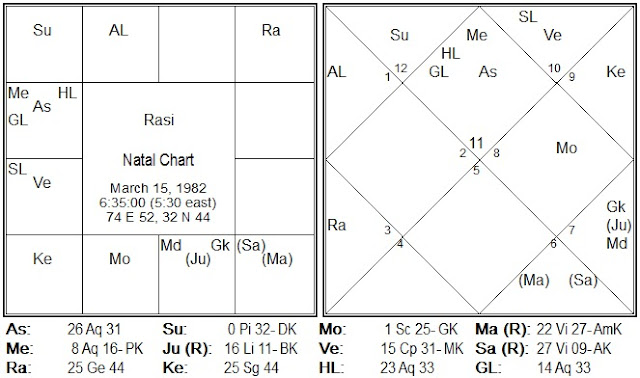
For future actions or direction of the native, this chart shows strong karmic root and karma yoga in this life, and for that, we have to look for the 3rd house of d3 which is vacant. In that case, we have to look for placement of 3rd lord in the d3 chart.
In D3 chart, lord of the 3rd house is Sun who is placed in the 2nd house with the moon getting Rasi aspect from the Venus and Jupiter from 9th and 12th house, clearly shows one has to be responsible regarding 2nd house matters (Family Wealth, Values, Family Responsibility toward parents) and one has to be spiritually align toward higher path of Bhakti or eternal devotion, as both the sun (Ruled by the Para Vidya – it is knowledge of higher spirituality and divine path, lorded by the Sun, who is the natural atmakaraka)and moon (Apara Vidya – is the knowledge of the material realm and is lorded by the Moon who is natural ruler of the mind and shows resources) are involved here in the Sign of Cancer (Sign of basic learning, education, and Bhakti experience) with the rasi aspect of Jupiter (all form of Non-material Knowledge, including Guru guidance, and teaching – shows all form of Shashtric knowledge those are spiritually in nature including jyotisha – the light of illuminating darkness) and Venus (Knowledge of those are governed by the Material things including healing, Mantric, Tantric or siddhis etc).
Conclusion:
This clearly shows that a native has to learn, serve and share his spiritual experience via Jyotish, Occult, and healing sciences after experiencing it by self and that would be his “Karma of the future Birth” to help, lift and guide others in a right direction via the modes of deep spiritual experiences and knowledge. For accomplishing this task native need to utilize his knowledge and learning in Jyotish and Healing sciences and later needs to share it via the modes of technical writing and research Journals.
Chart 2: Swami Viveka-Nanda
In the Swami Viveka Nanda chart, the 3rd house of the Natal chart is ruled by two lords Rahu and Saturn and both Saturn and Rahu are somehow interconnected with each other. Saturn being (BK- Bharti Karka) is in the 10th house from the Sun (AK) with the 8th lord Moon and Saturn is aspecting Rahu from the 3rd house that shows deep-rooted Karmic task assigned and given to Swami Viveka Nanda for the well-being of the society and mankind by Karma Yoga (Moon and Saturn in 10th – A yogi is born).
Saturn is all about studying deep-rooted karmas and experiencing and realizing deep karmic roots for uplifting those who are in need. It’s a good yoga of learning Karma and its pahla by self-realization and, as in Swami Vivekananda’s case Saturn is the 3rd lord associated with the 8th lord moon, so it is all about finishing the task of past birth assigned to him for liberating many souls those are directionless or unguided from the present birth tasks.
Karyesha (3rd lord of the D1) is Saturn and is placed in the 6th house in Sthira Rashi of Taurus (Sign of Wealth, family & values). As Karyesha is placed in the fixed sign, Suffering is at the Bhuva-Loka, which means one who realized at the Soul level, here Soul experiences are mainly ruled. It is about learning at the Atmic level (Soul realization, Sun Lagna) and one gets in the form of wealth, Finance, and Soul transformations. Here Wealth could be in any form as might be one of the Punya of the past life too.
In Swami Vivekananda’s chart, Graha (Planetary deity) is angry toward him and affliction is at the graha level and he will suffer on account of planetary anger. In D3 chart Saturn (BK- shows Guru teaching for the karma yoga of the future) is placed in the sign of Taurus (Wealth and family values) with Moon (Amk – Task given to him) and Mercury clearly shows Swami Vivekananda has to leave or sacrifice family life or follow the path of Moksha or liberation, or on account of his family wealth.
This will happen only when he will meet his guru and will realize his Soul purpose, as Saturn being Bk also the lord of the 2nd and 3rd house in both D1 and D3 charts placed in the 6th house with Moon and Mercury. Swami will accomplish this task via self-learning, self-realizing it via Manan, or practicing it via deep self-questioning or via meditation. As in both D1 and D3 charts, Karyesha Saturn and other lord Rahu is placed in the sign of Pisces and Taurus getting the Rashi aspect from Jupiter and Sun (Ak).
As the 8th lord moon is involved here with Karyesha Saturn (BK), swami Viveka Nanda will realize this life Karma-Yoga after meeting his divine guru who would be a Kali or Devi worshipper (Saturn is with Moon shows Devi worshipper or deity who illuminates one’s darkness from the soul and karma) and then he will realize his life goal or would understand his task given via his guru teaching, guidance and he will undertake this task Via mediation – Manan (Moon is ruled by the Apara Vidya and also Amk too, shows all form of knowledge one experience, realize or one get it via manan or via senses and it includes all the worldly knowledge in any art and science, including the knowledge of Vedas, Vedanta, and Vedanga).
Apara Vidya encompasses the entire spectrum of ‘objects’, that is, anything that can be objectified by our senses or mind. Anything that can be ‘seen’ is an object of Apara Vidya. Under this category comes all our worldly knowledge. Science, arts, commerce, management, technical knowledges, etc.
Interestingly the teacher even classifies the knowledge of the Vedas and Vedanga’s in this category, because they are also a part of the limited & changing world in front of us. Apara Vidya is worth knowing because of various reasons. One, specialization in any one field of the objective world, helps us to serve our society & world better, two, the pursuit of knowledge disciplines our mind & intellect, so that we become capable of thinking deeply & properly, and last but not the least, this pursuit of Apara Vidya helps us to realize the ephemerality of the objective world, and thus helps us to get qualities of vairagya, etc, and also motivates us to look out for something more permanent in this ever-changing world.
The objective of this categorization is to indicate to us that however much we may know about the world outside, by this pursuit alone we shall never move towards omniscience. Apara Vidya shall help us to make a living, have a dignified & respectable life, and have a thoughtful intelligent mind, but never ever hope that you shall move towards omniscience. This is not the way for the fulfillment of such an aspiration.
This clearly shows swami Vivekananda’s eternal goal for this life is to awaken people who are misguided in the path of darkness to move toward balanced material and spiritual knowledge.
In the D3 chart, Karyesha is placed in the 6th house and is the ruler of the 2nd and 3rd houses showing that swamiViveka-Nanda has to accomplish this Karma yoga task via visiting too many places, communicating, via delivering the speeches, traveling or leaving his family life. As Both Jupiter and Venus are Aspecting it from the 11th and the 2nd house from the D3 lagna via Rasi drishti. He has to do this task via learning and experiencing every sort of material and non-material knowledge and he needs to travel across the globe to deliver it in many of the forms, as the sun being AK placed in the 8th from the Karyesha and lordship of the 8th from it, Jupiter also aspecting it shows that the, its a long-lasting task assigned to him for the well being of the society till his conscious soul is alive. Its an Atmic task given to him for uplifting mankind.
Final Conclusion: I hope from the above-mentioned example charts and understanding of the Jagannath Drekkana D3 chart, one can understand his karma yoga and find his soul purpose, and able to do his destined karma yoga for the future life.
Source and Reference guides :
- The Jyotisha Digest, “Analysis of Varga charts ” by Manoj Kumar Gupta
- Fundamentals of Vedic Astrology by Visti Larsen
- Jagannathh Drekkana by Visti Larsen
- http://www.vmission.org.in/vedanta/articles/parapara.htmhttps://asitis.com/3
- https://www.speakingtree.in/blog/summary-of-the-bhagavadgita-chapter-three-karmayoga
- Varga Charts by Sagar Publication
- https://www.holy-bhagavad-gita.org/chapter/2/verse/47
- https://www.holy-bhagavad-gita.org/w/karma-phala
Related Consultation: From our Research Panel
This session is meant for those users who want to understand & decode root areas of life issues connecting with Past life karma, Curses, Doshas, Karmic Debts, and Rinanubandhan which they have accumulated from past life karmas, deeds, actions, and sins and are manifesting in their present life in different timelines, age, and the cycle of dashes, transits and progressions of Karmic planets. Click on the below link to understand more about this consultation:
Views: 1065

